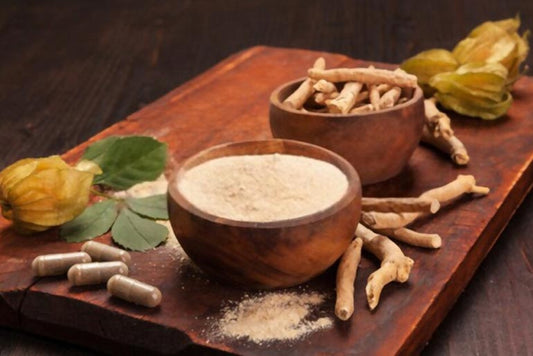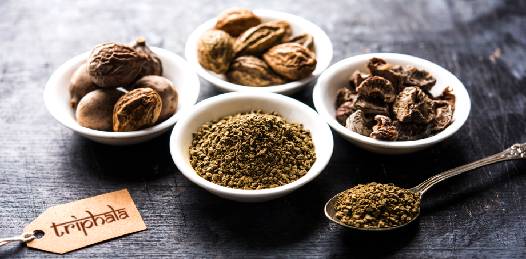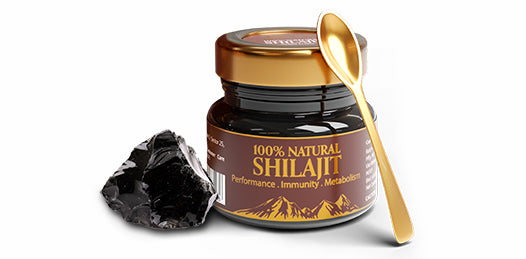In today's fast-paced world, it's easy to feel overwhelmed and exhausted. From juggling work and family responsibilities to managing daily stressors, fatigue can quickly take its toll on our overall well-being. Shilajit – a natural substance sourced from the heart of the Himalayas, offering a potent solution to modern-day exhaustion. Let's delve into why Shilajit has become a beacon of hope for those seeking to revitalize their weary bodies and reclaim their vitality.
In the ancient tradition of Ayurveda, Shilajit is esteemed as a Rasayana, an elixir of Rejuvenation that promotes longevity, vitality, and balance. It is cherished for its ability to balance Doshas- Vata, Pitta, and Kapha, bringing harmony to body, mind, and spirit.

Shilajit's historical use dates back thousands of years in Ayurvedic texts like the Charka Samhita and Sushrut Samhita, demonstrating its enduring significance in traditional Indian medicine.
The glowing praise by Master Charka underscores its versatility in treating a wide range of ailments when used appropriately. Moreover, its reputation for enhancing energy and vitality has made it a popular choice in various health and wellness practices, including bodybuilding. Its efficacy in addressing conditions like diabetes, asthma, joint pain, and in various skin ailments further highlights its therapeutic potential and enduring popularity in Ayurveda.
Traditional beliefs
In ancient times, during the summer season, the intense heat from the sun would cause the mountains to warm up, leading to the melting of certain layers. This process resulted in the formation of a resin-like semi-solid liquid known as Shilajit, which bears a resemblance to coal tar in consistency that gains shines upon drying. It is considered as fulvic acid.
Vernacular Names
English name: Mineral Pitch, Mineral Wax, Black Asphaltum
Latin Name: Asphaltum punjabianum
Russian Name: Mumie
Persian Name: Mumia
Malyalam Name: Karmadu
Sanskrit Name: shilajatu, shiladhatu, shilodbhava, Girijatu, Adrija

Classification
Master Charka indeed classified Shilajit into four types based on their origin, each associated with specific minerals:
Swarna Garbha Shilajitu: Derived from areas rich in gold ores.
Rajat Garbha Shilajitu: Obtained from regions abundant in silver ores.
Tamra Garbha Shilajitu: Derived from locations where copper ores are prevalent.
Loh Garbha Shilajitu: Obtained from areas with iron ore deposits.
Master Charka regarded Shilajit sourced from black iron ores as the best among the four types. This classification provides insight into the diverse mineral compositions of Shilajit and their potential therapeutic properties as perceived in Ayurveda.
Medicinal qualities
Master Charka and Master Sushrut provided valuable insights into the medicinal qualities of Shilajit, which include
Taste: Shilajit is characterized by a bitter and astringent taste, with minimal sourness
Conversion after digestion: After digestion, Shilajit undergoes a conversion to a pungent taste.
Potency: It is considered to have a balanced potency, neither too hot nor too cold.
Therapeutic effects: When administered properly, Shilajit is believed to have Regenerative properties, acting as an aphrodisiac, and capable of curing various diseases. These qualities highlight the multifaceted nature of Shilajit and its potential benefits in promoting health and well-being according to Ayurvedic principles.
How to use Shilajit
Shilajit can be used in various forms, including resins, powders, capsules, and supplements. Here's how it can be consumed:
Oral Consumption: Shilajit can be taken orally by mixing it with warm water, milk, or any herbal formulations as per individual preference and health condition.
Resin: If using Shilajit in resin form, a small amount can be dissolved in warm water
Powder: If in powder form, it can be mixed with warm water, or milk, or added to herbal formulations or recipes.
Capsules and Supplements: Shilajit is also available in capsule or supplement form for convenient consumption.
It's essential to follow recommended dosage guidelines and consult with an Ayurvedic practitioner for personalized recommendations based on individual health needs and conditions.

In conclusion, Shilajit stands as a testament to the profound wisdom of Ayurveda and the boundless treasure of nature. Its multifaceted benefits for physical, mental, and emotional well-being offer a holistic approach to health and vitality, rooted in the ancient tradition of Ayurveda medicine and supported by modern science. Embracing the therapeutic power of Shilajit is not merely a journey of wellness but a celebration of the interconnectedness between humanity and the natural world, a harmonious union that nourishes body, mind, and spirit.











